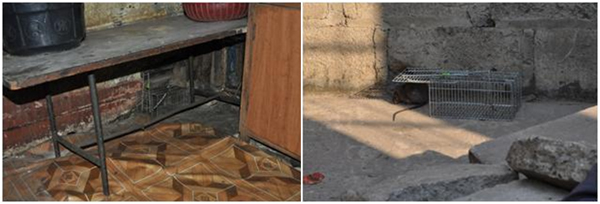Report of the Zambia research trip activity
Report of the Zambia research trip activity – 2012
Oroszlany Balazs – Laboratory of Toxicology, Graduate School of Veterinary Medicine, Hokkaido University, Sapporo, Japan
Project Period: 2012/08/19 – 2012/09/06
Part 1 – Research activities
Antropogenic heavy metal and metalloid pollution is a continous public health and environmental hazard factor. This is especially true in mining-related metal pollutions, where we are dealing with a well-characterized, high level, intensive exposure due to dust particles and waste-contaminated water sources. Finding their way to the food chain, the metals may contaminate crops, livestock, and, finally, the human population also.
Zambia is the home of some of the richest copper (Co), lead (Pb) and zinc (Zn) deposits, and therefore has a long tradition of mining and smelting. The exploitation of these metals, especially at the end of the 20th century resulted in elevated pollution and health problems. This was especially true in the city of Kabwe, the capital of Zambia’s central province, where Pb-related activites turned the area into one of the most polluted territories of the world.
Nowadays the mining operations are stopped, but in the case of a toxic element such as Pb.
Previous research confirmed that elevated metal levels could still be found in cattle and fowl populations, and that the degree of contamination correlates well with the distance from the mining areas. A current research project (conduced by the our laboratory) is investigating the same connection in the human community. It is important to continue monitoring the change of environmental Pb and Zn levels in the area. Selecting a sentinel species with a similar exposure route compared to humans would be an effective monitoring method, but so far no such terrestrial mammalian sentinel model was established. Therefore we decided to concentrate on Rattus spp., a promising candidate for this specific sentinel role. Rats are omnivorous, and occupy a similar niche as humans, and provide a cost-effective way for future measurements.
We travelled Kabwe on the 24th of August. From the „Elephanthead” community near the previous mining area, we received permission from 4 house owners to set rat trap in their premises. With 48 rat traps distributed, we manage to collect 21 rodents (19 rats and 2 mice).  The percentage of female animals were more than 70%. The animals themselves were in great physical condition, the only indication of disease being parasitosis in the liver, possibly from Cysticercus fasciolaris infection. The following organs and tissues were collected for future chemical analysis and RNA work: blood, liver, kidney, spleen, lung, heart, testis (if available), hindleg, brain, eyelens (in 10% formaline, for age determination).
The percentage of female animals were more than 70%. The animals themselves were in great physical condition, the only indication of disease being parasitosis in the liver, possibly from Cysticercus fasciolaris infection. The following organs and tissues were collected for future chemical analysis and RNA work: blood, liver, kidney, spleen, lung, heart, testis (if available), hindleg, brain, eyelens (in 10% formaline, for age determination).
Part 2: 4th International symposium on field toxicology
On the 3rd of September I presented my research in the poster session of 4th International symposium on field toxicology at University of Zambia. The presentation title was “Metabolism of pyrene, a polycyclic aromatic hydrocarbon in freshwater turtles”. Comments received from various professors regarding the importance of the phase I metabolism and concentrationg on the low UGT activity helped me to focuse on the important parts and confirm the future pathway of my research.

